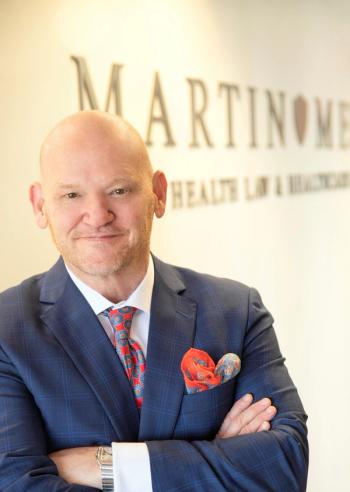
The current Medicaid landscape and the role of faith-based hospitals
Medicaid is on the chopping block, but that doesn't mean the end of indigent care.
For anyone who reads or listens to the current activity in Washington, DC, it should come as no surprise that Medicaid is “front and center” for health care cuts. According to
The Issue: The Medicaid program is the largest single source of health care coverage in the United States, covering nearly half of all children, over 40% of births (including nearly 50% of births in rural communities), many low-income elderly and disabled individuals, and working adults in low-wage jobs that do not offer affordable coverage.Congress is currently considering policy options that could collectively reduce federal spending for the Medicaid program by trillions of dollars over the next 10 years. These options include proposals to directly reduce federal spending on the program and limit states’ ability to generate funding for the state share of the costs.
AHA Take: Even a small portion of the proposed reductions could have wide-ranging negative consequences for the health and well-being of both Medicaid enrollees and the broader health care system. AHA urges Congress to reject reductions to the Medicaid program that would not only strip access to health care from some of the most vulnerable populations but also destabilize hospitals and health systems, leading to a loss of services that would impact patients and communities nationwide.
Indeed, for over 60 years,
An important aspect of Medicaid is that federal law “provides two primary types of benefit packages for state Medicaid programs: (1) traditional benefits and (2) alternative benefit plans (ABPs).” The notion of beneficiary cost saving is limited through the Medicaid program but perhaps should be evaluated instead of doing a carte blanche cut to the program.
Although I have ample health care credentials to my name – both in my academic pedigree, professional experience and as an author and speaker – I asked my Dad, a retired hospital chief executive officer (CEO) who served on numerous boards, as well as the AHA’s Regional Policy Board for his perspective. Not surprisingly, he indicated to look back to the origin of why Medicaid was implemented and also said that a universal “cut” is not prudent. Can efficiencies be gained – of course. Are there people “gaming the system” – of course. Even states have
If cuts are made, who will pick up the slack to provide health care to the indigent or lower income individuals? This brings us to faith-based hospitals, which have served as a foundation of our healthcare system since the
- Pennsylvania Hospital — founded in 1751 by Quaker Christian Dr. Thomas Bond and Benjamin Franklin, ranked number fourteen in the nation today.
- New York–Presbyterian Hospital — founded in 1771 by Episcopal Christian Samuel Bard; ranked number ten in the nation today. (Note: Founder Samuel Bard established an Episcopal church even while he led some of the earliest medical schools in the history of the United States.)
- Massachusetts General Hospital — founded in 1811 by Rev. John Bartlett, who was motivated by Christian charity for the poor; ranked number four in the nation today.
Today, the number of faith-based hospitals in the United States increased from 585 in 1995 to 726 in 2016. That is not to say that preverbal “sins” are not committed. As Jimmy Buffet said in his song Fruitcakes, “[o]h, there’s a thin line between Saturday night and Sunday morning.” On
This brings us back to mission of caring for people and Medicaid. If people are being laid off and prices are rising, what income is available to donate to charitable causes, including faith-based hospitals? How will hospitals be able to provide indigent care with less revenue, especially in rural areas? How much cost shifting can occur, especially when entities like United Healthcare are in court for using artificial intelligence to arbitrarily deny claims, which in turn lead to conditions worsening and more costly care? The solution is to analyze the most costly areas, look at social risk factors (e.g., lack of exercise, access to produce, ability to read and understand healthful recipes), are patients being over-prescribed expensive medications, are they being denied generic medications such as Metformin, and do the individuals truly meet the program’s requirements? There is no simple process or solution but taking a prudent and thoughtful approach is the only way not to “up-end the apple cart” across the entire health care sector and economy.
Newsletter
Optimize your practice with the Physicians Practice newsletter, offering management pearls, leadership tips, and business strategies tailored for practice administrators and physicians of any specialty.














